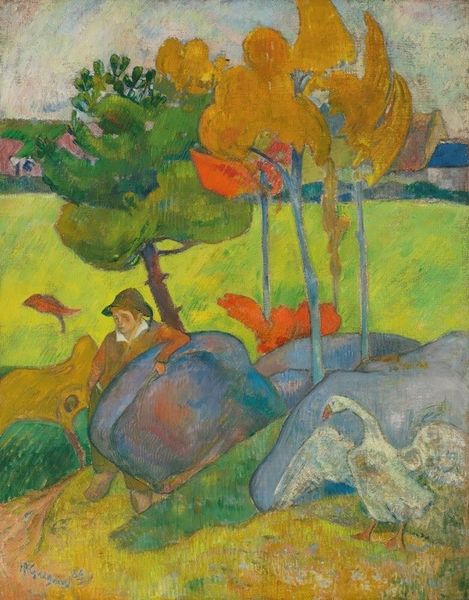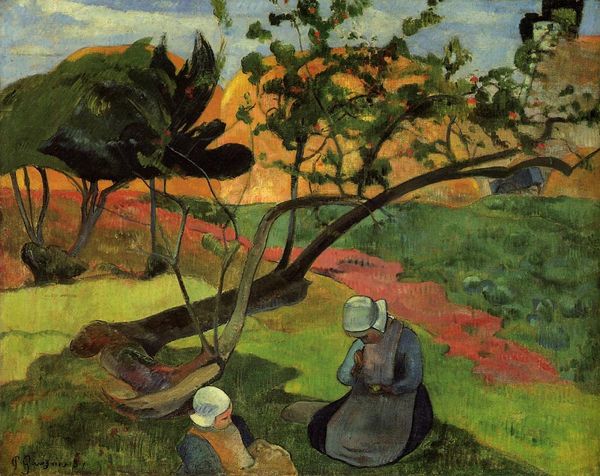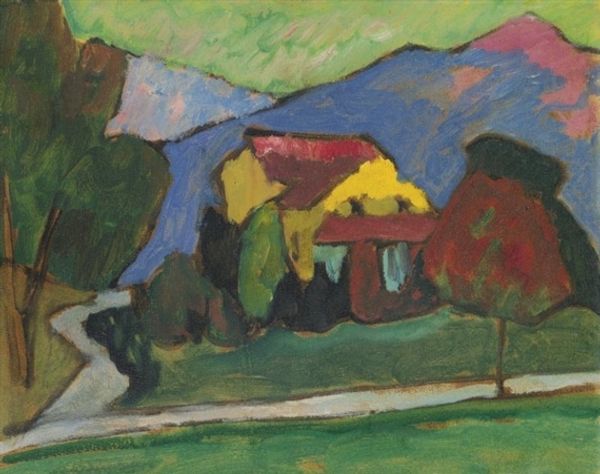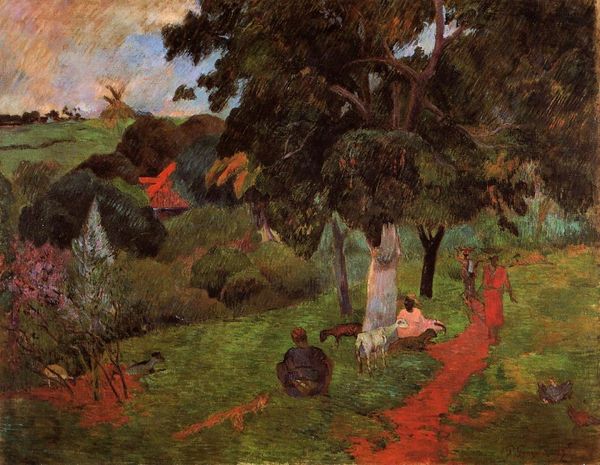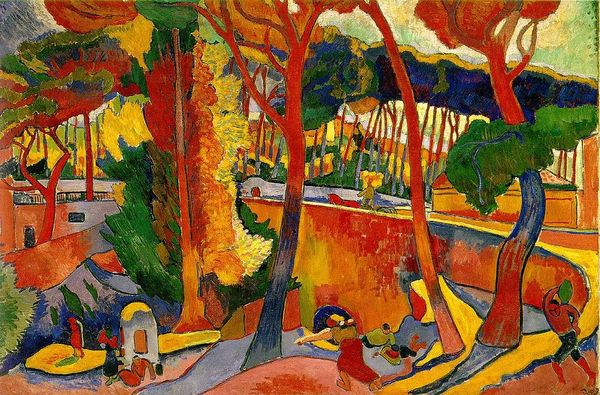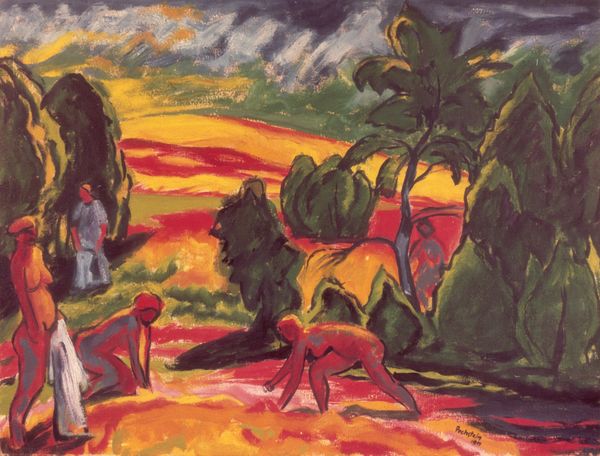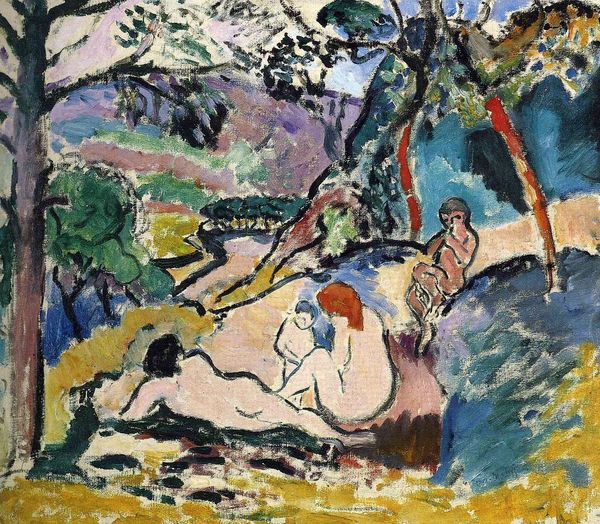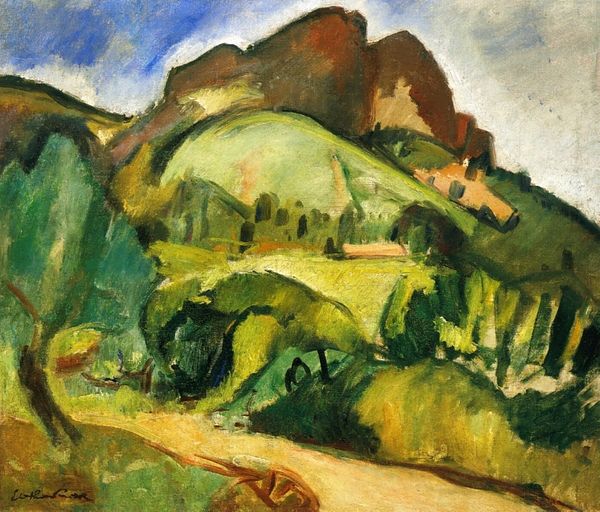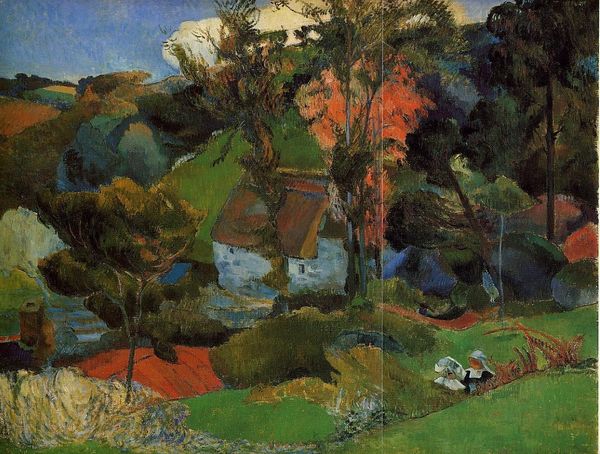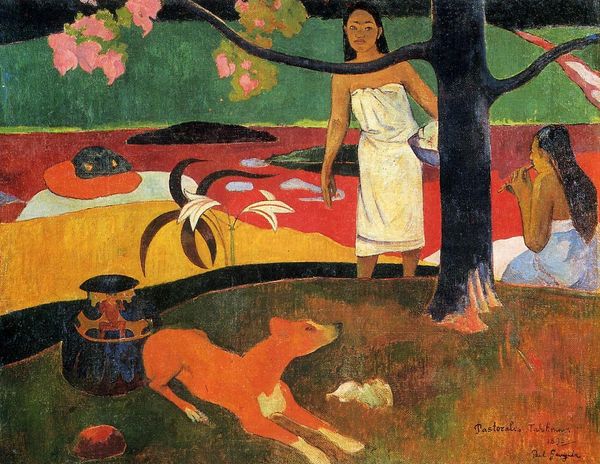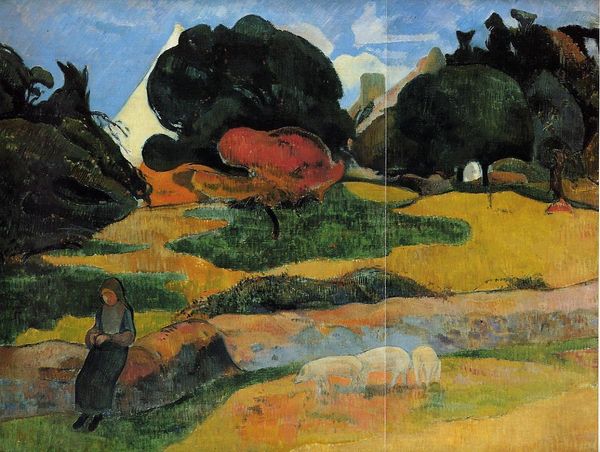
painting, oil-paint
#
figurative
#
painting
#
oil-paint
#
landscape
#
figuration
#
oil painting
#
naive art
#
orientalism
#
symbolism
#
watercolour illustration
#
genre-painting
#
post-impressionism
Copyright: Public Domain: Artvee
Curator: Before us is Paul Gauguin's "Mata Mua," painted in 1892. Gauguin made it during his first trip to Tahiti, at a time when he was intentionally positioning himself outside the European art world. Editor: The heavy use of pigment really strikes me; it creates a palpable surface texture. You can almost feel the weight and grit of the oil paint, adding a strange sort of materiality to this seemingly ethereal scene. Curator: Absolutely. It's fascinating to consider the pigments he used and where he sourced them. Gauguin sought to create an "authentic" depiction of Tahitian life, but even the raw materials – the paints themselves – were likely imported, underscoring the complicated intersection of cultures in his work. How the production impacted native artisans of the time is something to keep in mind, too. Editor: You can see that reflected in the imagery. The way the Tahitian women are arranged—they almost resemble figures in a classical frieze, posed, and perhaps staged, within the composition. Consider also that massive, monolithic figure. It has clear stylistic differences from the women who revere it. How did Gauguin conceive of Tahitian spirituality and incorporate his assumptions into his technique? Curator: It’s crucial to contextualize Gauguin’s idealized vision within the framework of French colonialism. He yearned for an "untouched" culture, yet his very presence contributed to its transformation. We cannot consider Gauguin's art apart from the cultural power dynamics at play. Editor: The intense colors evoke that tension so well, actually; the yellows and reds seem heightened and less natural than they should be, conveying an idea of paradise altered, rather than an existing world. I feel I'm not looking at Tahiti so much as Gauguin’s *idea* of Tahiti, shaped as much by European expectation and projection. Curator: Examining "Mata Mua" demands a recognition of art's role in shaping, reflecting, and even distorting historical narratives. It makes us consider how artworks serve specific functions for society. Editor: By looking at both the application of the pigment and historical factors we understand this art's place as commodity and tool in culture.
Comments
No comments
Be the first to comment and join the conversation on the ultimate creative platform.
